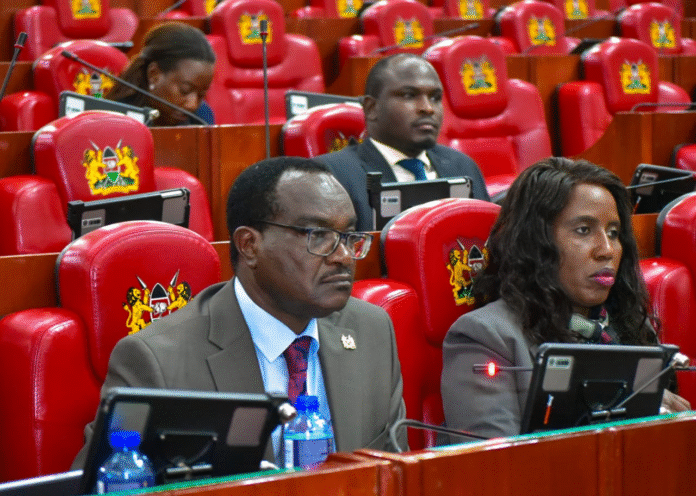
Education Cabinet Secretary Julius Ogamba has admitted that public schools have received only half of their allocated funds this financial year, raising concerns over the sustainability of free education in Kenya.
Appearing before the National Assembly’s Education Committee on Thursday, Ogamba said the ministry had so far disbursed Sh28.8 billion out of the expected Sh36.3 billion for 3.2 million learners. The funds were released in two tranches in January and March.
“The figure of Sh64 billion mentioned by MP Robert Mbui could be accurate,” Ogamba said. “But even with that, we’re not getting what we budgeted for.”
MPs expressed alarm at the delayed disbursement of capitation funds, warning that the financial strain is threatening the government’s promise of free and compulsory education.
In Term One, schools received only Sh14 billion of the Sh28 billion they were expecting, according to Mbui. That shortfall, MPs noted, had forced many schools to accumulate pending bills and struggle to maintain operations.
“How free is education if schools are running on half their budgets?” posed MP Rebecca Tonkei.
Ogamba acknowledged the problem and attributed it to broader fiscal pressures and budget deficits. He added that while primary school learners are supposed to receive Sh1,420 annually, that amount falls far below the Sh2,238 recommended by the Presidential Working Party on Education Reform. Similarly, junior secondary schools are receiving just half of the Sh15,043 allocated per learner.
Committee Chair Julius Melly called for urgent reform, warning that with an annual population growth rate of nearly five percent, the education sector cannot keep up without sustainable funding.
“Free education must be meaningful. We must find workable solutions to match the growing demand,” Melly said.
He also revealed that the ministry has shifted from the outdated National Education Management Information System (NEMIS) to the Kenya Education Management Information System (KEMIS) to improve data accuracy.
However, MPs remained unconvinced. MP Clive Gesairo criticised the ministry for being unaware of the exact pending bills owed to schools, terming it a major planning failure.
The Committee was told that while each primary school learner is entitled to Sh1,420, and junior and secondary learners to Sh15,043 and Sh22,244 respectively, not all funds reach the schools due to deductions. For instance, Sh75 is redirected to the Kenya Institute of Curriculum Development for textbooks and Sh20 supports co-curricular activities.
Ogamba also clarified that national examination costs are covered separately through the Kenya National Examinations Council (KNEC), not from capitation funds.
To ease financial pressure, Deputy Minority Leader Robert Mbui suggested the introduction of a cost-sharing model, arguing that it may be more honest than promising full funding that doesn’t materialise.
“If it’s unaffordable, let’s allow parents to assist. Better that than forcing schools to operate without money,” Mbui said.
Melly added, “We need a national conversation on whether we can continue fully funding education amid rising enrollment and limited resources.”
MPs further questioned why large amounts, such as the Sh40 of the Sh76 per learner meant for co-curricular activities, remain held by the ministry instead of reaching schools.
Ogamba concluded by urging Parliament to support the Ministry in securing full budgetary allocations in the coming fiscal year to avoid further disruption in the education sector.






